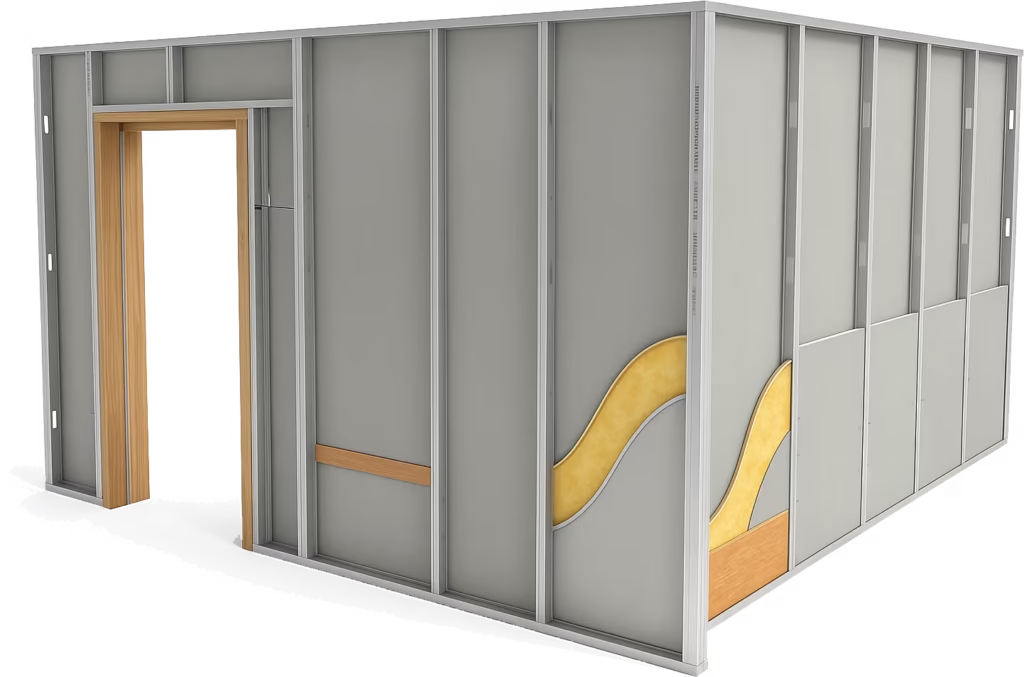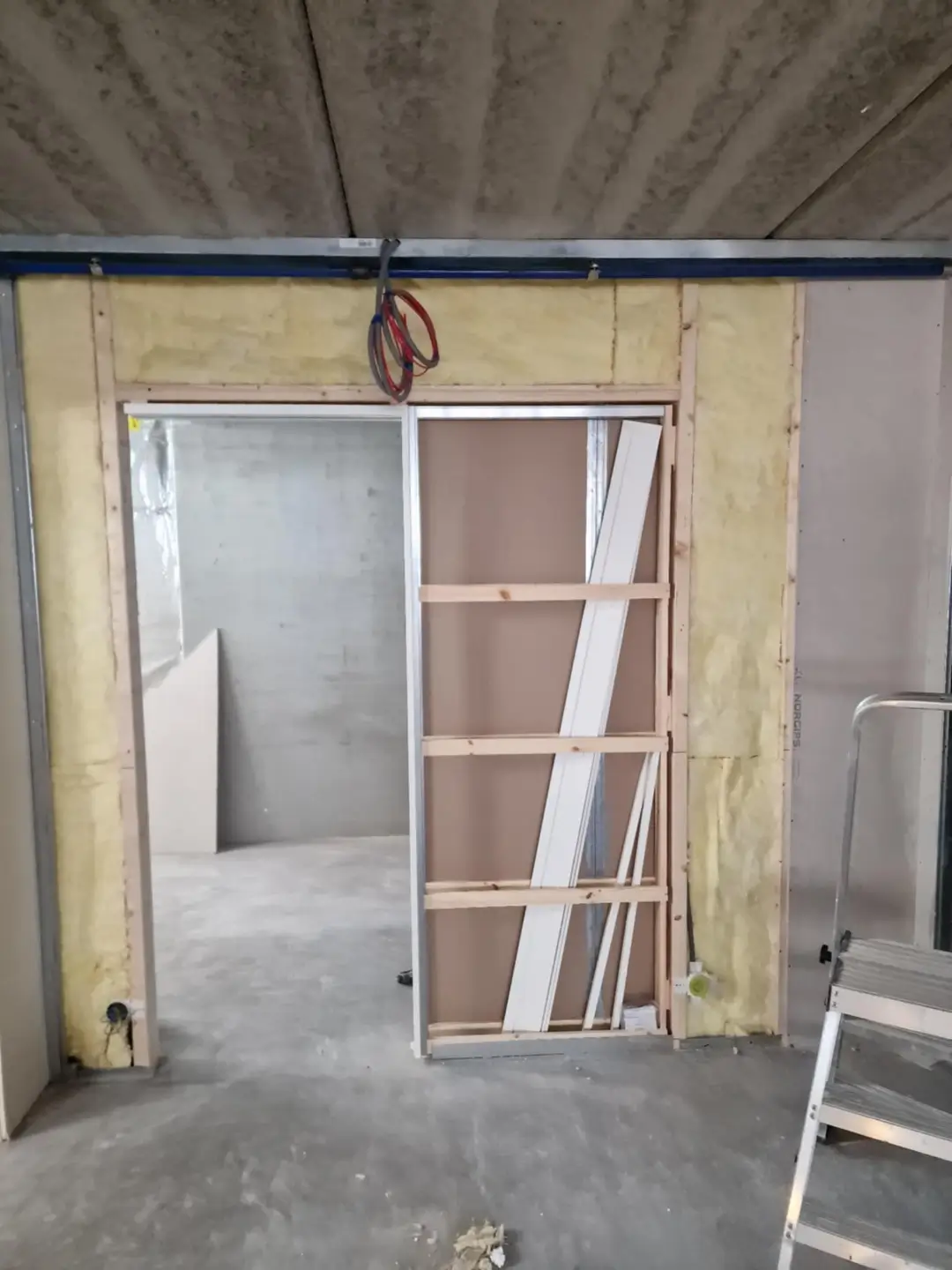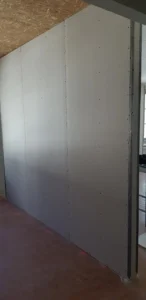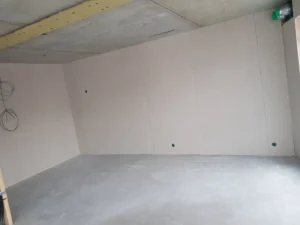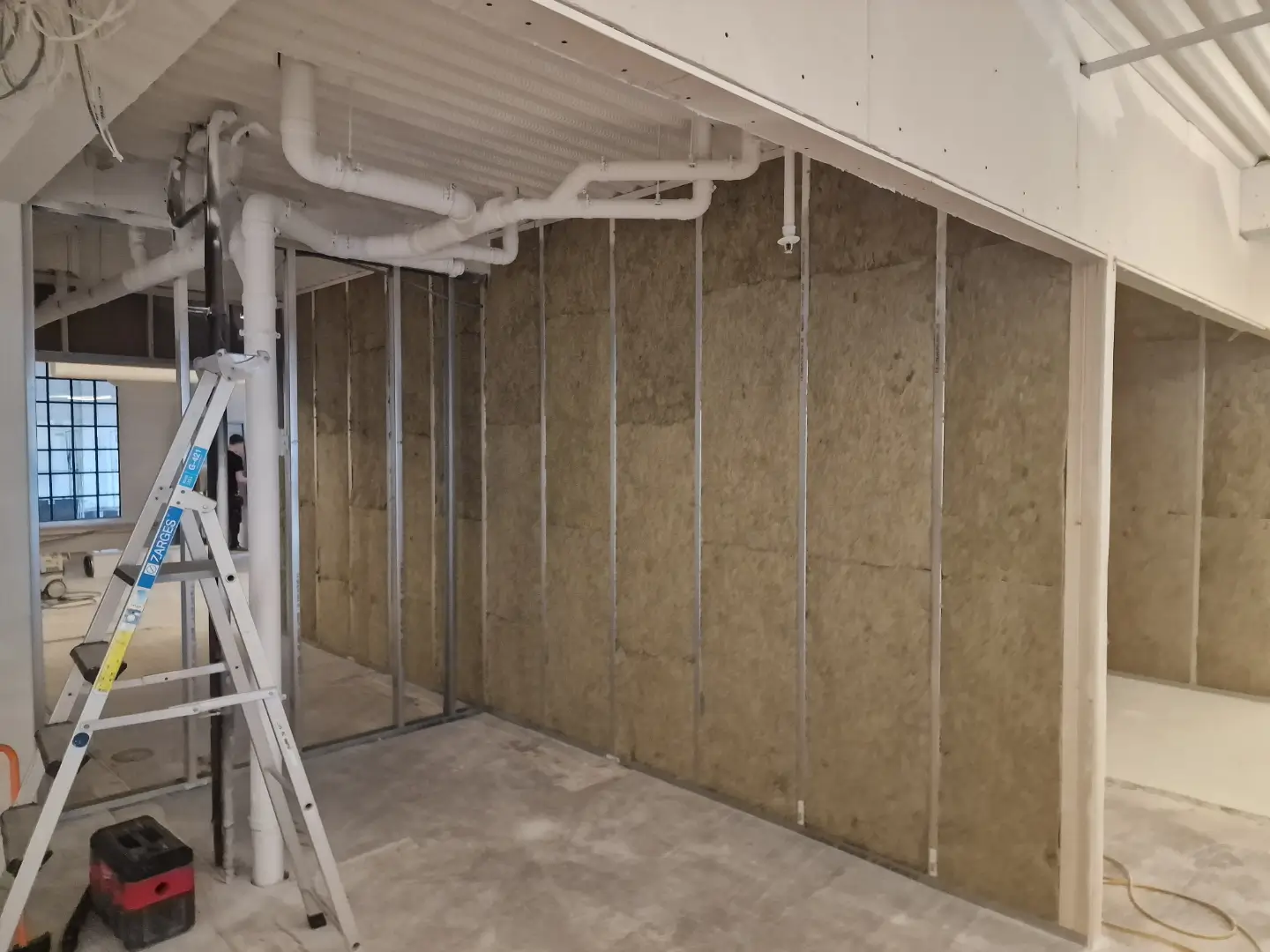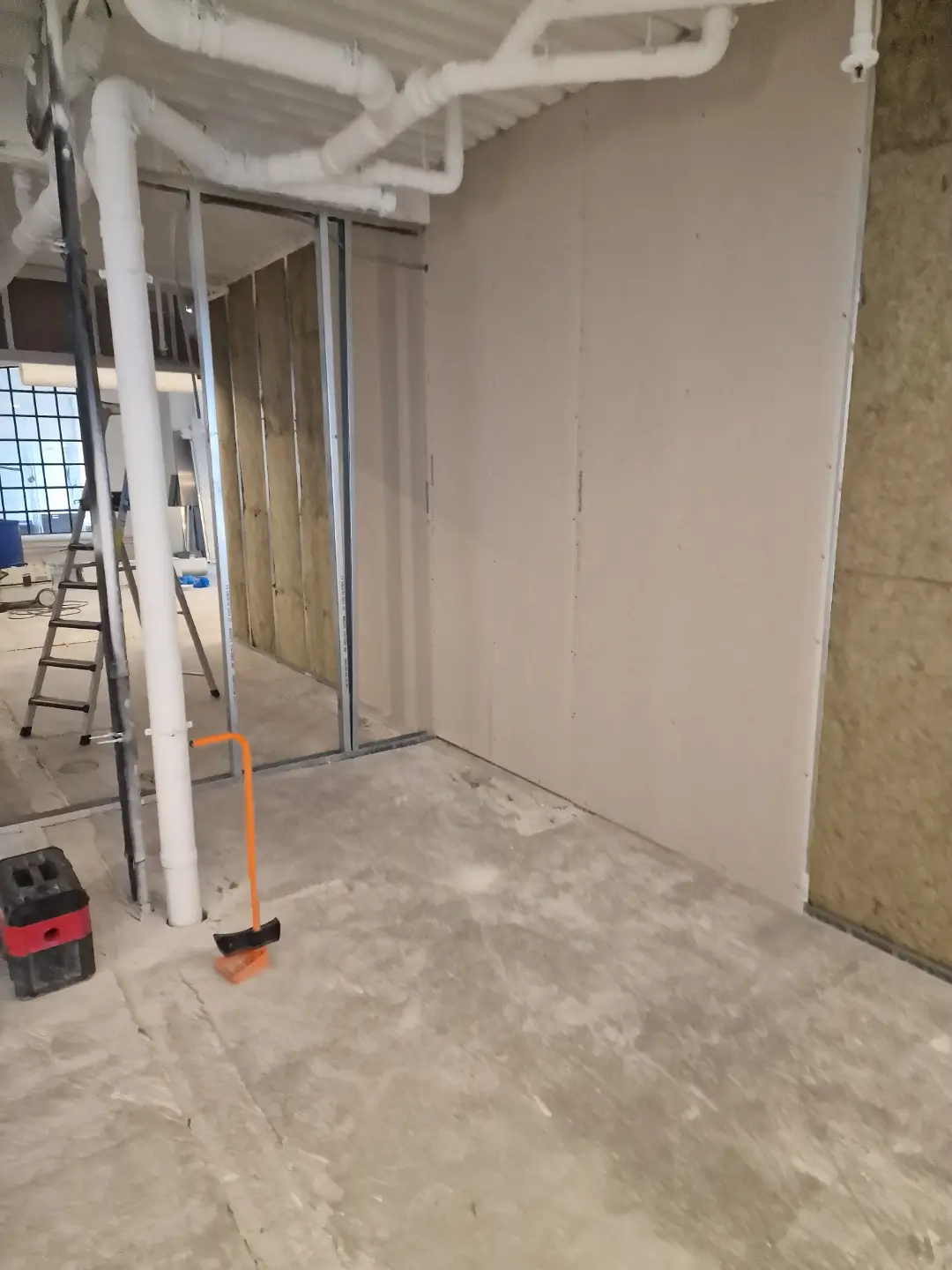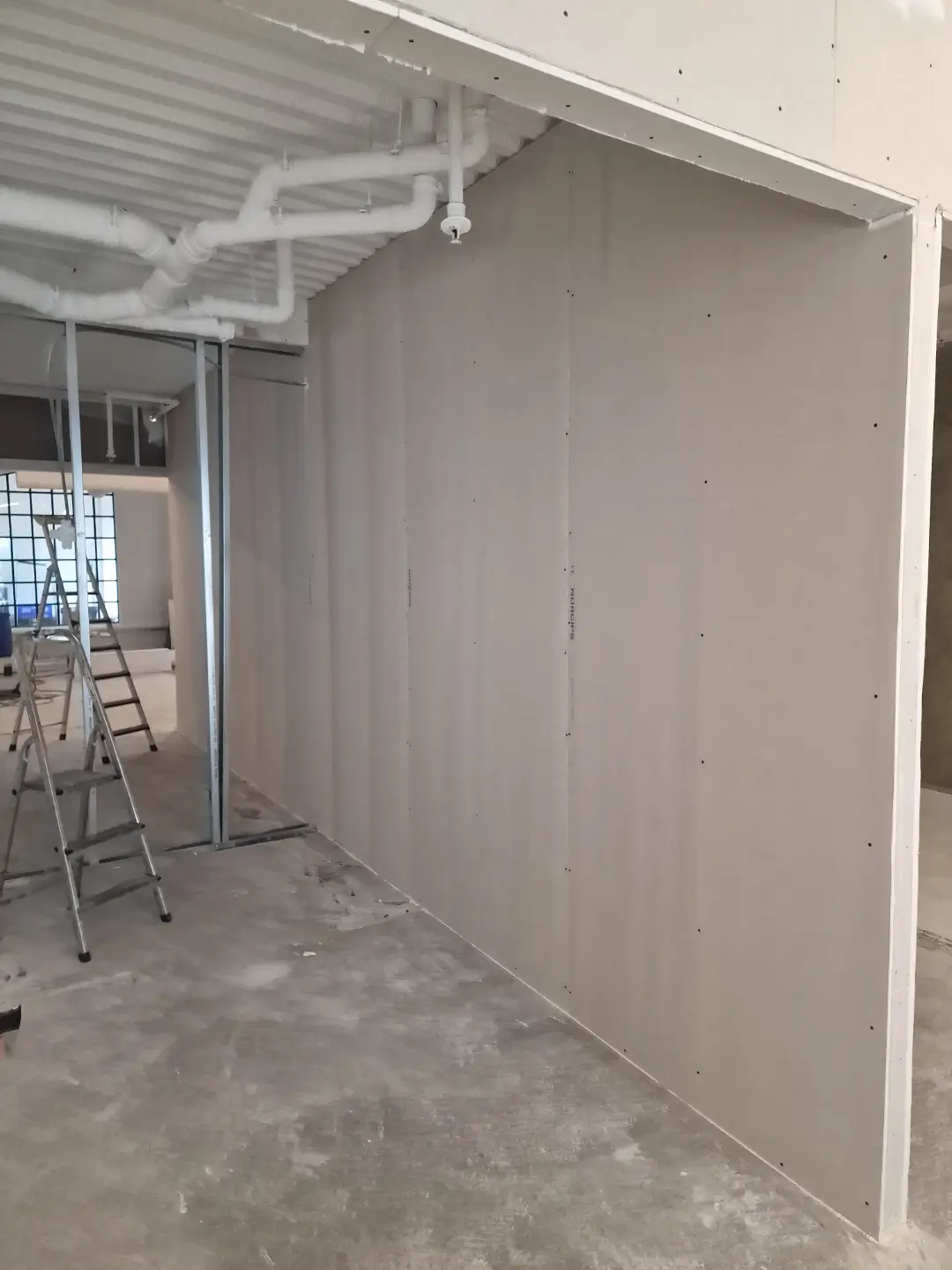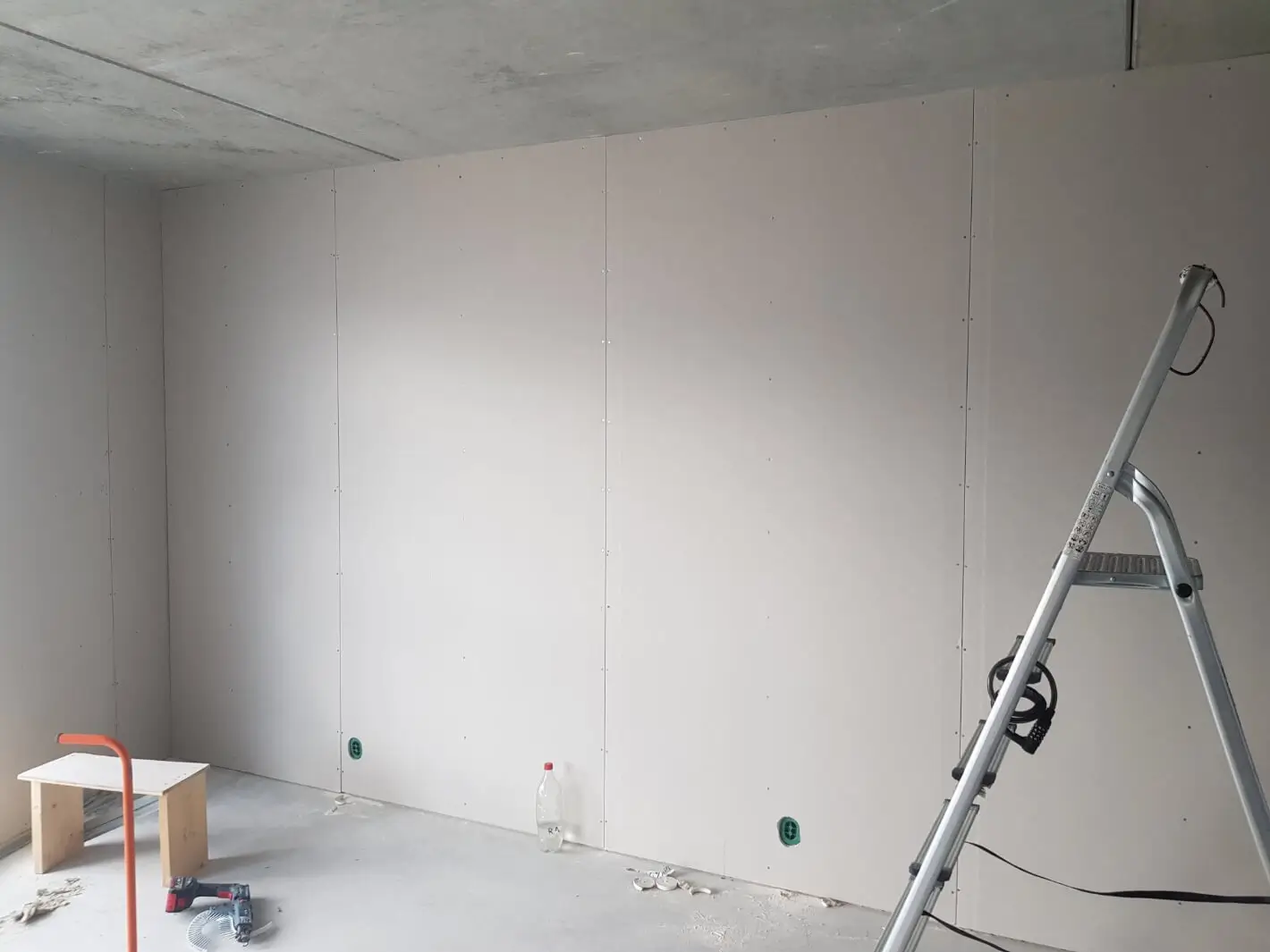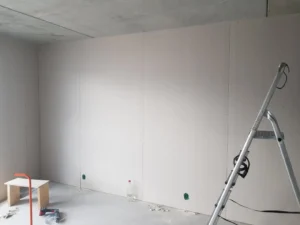Wall Partition System Overview and Use Cases
Our wall partitions are constructed as non-load-bearing systems, built using galvanized steel profiles and high-quality gypsum boards. These systems enable efficient space division, sound control, and the option for fire-rated configurations.
All assemblies follow national and European standards, including NS 3912 and EN 13964, and are implemented according to detailed installation manuals from Norgips, Gyproc, and Knauf.
Typical Use Cases:
- Office fit-outs and internal divisions
- Residential and apartment unit separations
- Healthcare and educational facilities
- Hotel and commercial space compartmentalization
Wall Partition Construction Details and Materials
At Andronor, we build wall partitions using a dry construction method composed of vertical C-studs mounted within horizontal U-tracks, forming the structural frame. These elements are precisely aligned and anchored to the floor and ceiling slab with professional-grade fixings.
We apply one or two layers of gypsum boards depending on design requirements. Single-layer systems provide a rapid and efficient wall surface, while double-layer installations deliver enhanced acoustic and fire performance.
Acoustic insulation is often introduced within the cavity using mineral wool slabs such as Glava Akuduk, contributing to higher sound attenuation and thermal stability.
For standard applications, our wall height solutions extend up to 4.2 meters. Where higher spans are required, we adapt the profile dimensions, reinforce the frame structure, and reduce stud spacing to maintain rigidity and compliance.
Standard Dimensions and Profile Specifications for Partitions
All dimensions and materials are selected based on performance requirements and verified manufacturer documentation. Below is a typical profile scheme used by our team:
| Component | Specification |
|---|---|
| Stud spacing | 600 mm center-to-center (standard), 450 mm when greater rigidity or acoustic mass is required |
| Track profile | U70, U95, or U120 based on wall type and insulation depth |
| Stud profile | C70, C95, or C120 to match the track width |
| Board thickness | 12.5 mm standard / 15 mm for fire-rated systems |
| Insulation cavity depth | 50–70 mm, filled with mineral wool if applicable |
| Fastening to slab | Anchors or screws at max 600 mm intervals |
All profiles are CE-certified, corrosion-resistant, and compatible with moisture-resistant or fire-rated gypsum boards.
Structural Techniques and Compliance for Wall Partition Installation
Treatment Around Openings
In our installations, vertical seams are never aligned directly above or below windows and doors. We position joints at least 300 mm away from opening edges and reinforce the perimeter with continuous studs and horizontal noggins. Reveal areas are finished using metal or paper-faced corner beads to ensure resilience against cracking and impact.
High Wall Applications
Where wall height exceeds standard board length (2400–2500 mm), we adopt a horizontal layout for gypsum panels in a staggered (brick-like) pattern. This minimizes vertical seams and improves wall rigidity. For certain projects, we may instead install vertical boards from floor to ceiling and add a cut panel above or below, ensuring the horizontal seam is located a minimum of 300 mm from any boundary surface.
To maintain seam integrity, all horizontal board joints are supported with intermediate profiles or noggins and are fastened at reduced intervals of 200 mm.
Corner Detailing
We avoid placing board seams directly at internal or external corners. Instead, seams are offset by at least 150 mm from the corner line. For external corners, we use galvanized steel corner beads embedded in joint compound, while internal corners are finished with embedded paper tape and smoothed for a seamless finish.
Fixing and Jointing
All gypsum boards are fastened to metal studs using fine-thread drywall screws:
- Single-layer systems: Screws Ø 3.5 mm x 25 mm
- Double-layer systems: Screws Ø 3.5 mm x 35–45 mm
Vertical fixings are spaced at a maximum of 250 mm, while horizontal seams are secured at 200 mm intervals. A 10 mm clearance from the board edge is always maintained to prevent cracking. Corrosion-resistant fasteners are used in humid zones and perimeter walls.
Joint treatment is performed according to NS 3912 standards. We use manufacturer-approved joint compounds (e.g., Norgips JF or Gyproc Pro) and reinforce seams with tape. In multi-layered constructions, the second layer is always installed with offset seams to prevent alignment with the base layer.
Expansion & Movement Considerations
In wall lengths exceeding 10–15 meters, we introduce movement joints that break the profile continuity using split-stud designs and elastic filler compounds. These accommodate natural building movement without affecting wall integrity.
Wall Partition Acoustic and Fire Performance Options
We frequently deliver wall systems with elevated performance metrics for sound and fire resistance. These assemblies are constructed using double-layered boards combined with high-density mineral wool within the frame cavity.
| System Build-Up | Acoustic Rating (Rw) | Fire Resistance |
|---|---|---|
| Single-layer gypsum, uninsulated | ~35 dB | Not rated |
| Double-layer gypsum + Glava Akuduk | 45–50 dB | EI30 / EI60 |
All fire-rated systems are built using certified components and strictly follow tested system diagrams from the respective manufacturers.
Step-by-Step Wall Partition Installation Sequence
Every installation by Andronor follows a structured process:
- Laser-based layout marking on slab surfaces
- Fixing of U-profiles to floor and ceiling using expansion anchors
- Insertion and alignment of vertical C-studs at specified intervals
- Optional installation of acoustic insulation within cavities
- First layer of gypsum board fixed with calibrated screw spacing
- Second layer (if applicable) installed with offset seams
- Seam taping, compound application, and surface sanding
- Final preparation for painting or wall finishing
Certified Wall Partition Materials and Installation Standards
All systems are constructed with certified components from:
- Norgips
- Gyproc
- Knauf
- Glava (insulation)
- Rockwool (insulation)
- Essve / Simpson Strong-Tie (fixings)
- Dana Lim (sealants and fillers)
- Others
The entire system meets the compliance framework of:
- NS 3912 (Interior wall installation standard)
- EN 13964 (CE conformity for profiles and boards)
- EN 13501 (Reaction to fire classification)
